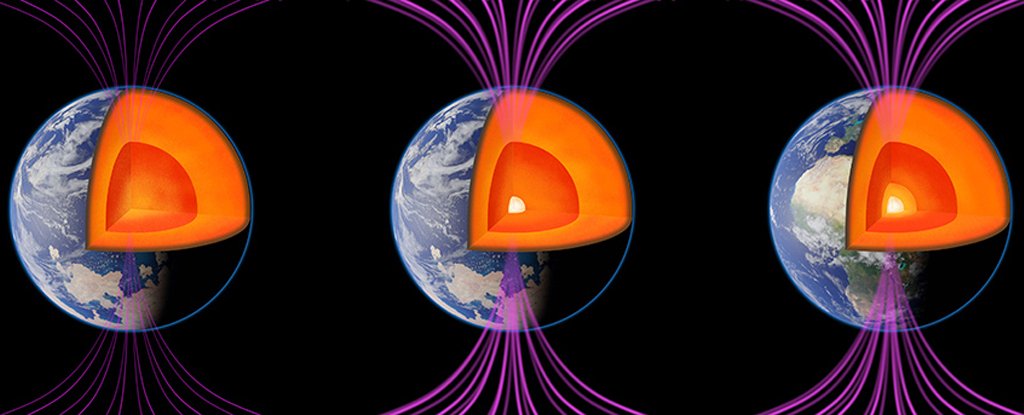Products You May Like
Researchers have been able to use an analysis of ancient rock crystals – and the magnetism records locked inside them – to trace back the history of Earth’s inner core across hundreds of millions of years.
Earth’s core, a dense hot blob of iron and nickel, is actually made up of two layers – the solid inner core crammed inside a molten outer core. Then comes the rocky mantle (the thickest of all the layers) and the crust that we all live on. We’re talking about 2,900 kilometers (about 1,800 miles) underground.
Based on the researchers’ findings, it seems Earth’s inner core was crystalizing into a significantly large mass around 550 million years ago. This crystalization provided enough heat to restore the magnetic field – which had depleted around 15 million years earlier – and setting the scene for a major explosion of life.
Earth’s magnetic field, protecting life from harmful solar winds, is actually governed by the swirling liquid iron in the outer core. As this new study makes clear, however, the solid iron-nickel alloy at the very center also has a key role to play as an energy source.
“The inner core is tremendously important,” says geophysicist John Tarduno from the University of Rochester in New York. “Right before the inner core started to grow, the magnetic field was at the point of collapse, but as soon as the inner core started to grow, the field was regenerated.”
“This research really highlights the need to have something like a growing inner core that sustains a magnetic field over the entire lifetime – many billions of years – of a planet.”
The huge distances and hot temperatures make measuring Earth’s core virtually impossible, so scientists rely on crystals in rock – in this case, feldspar crystals in anorthosite. These crystals act as highly accurate recorders of magnetism.
By comparing rocks dated at 565 million years ago to rocks dated to 532 million years ago, the team was able to see the shift in magnetic strength – a dramatic comeback for Earth’s magnetic field. The change took tens of millions of years, but that’s relatively speedy in terms of geological timescales.
Thermal models based on the research suggest that the structure of the inner core changed around 450 million years ago, creating a boundary between the innermost and outermost inner core. Changes in the mantle also match up with these timings.
“Because we constrained the inner core’s age more accurately, we could explore the fact that the present-day inner core is actually composed of two parts,” says Tarduno.
“Plate tectonic movements on Earth’s surface indirectly affected the inner core, and the history of these movements is imprinted deep within Earth in the inner core’s structure.”
Knowing more about how the inner core evolved to its present state can also teach us about how it might change again in the future – as well as giving us a comparison point to use when studying other planets.
We only need to take a look at Mars to see what would have happened if the inner core hadn’t grown and provided the impetus for Earth’s magnetic field to be made strong enough to repel harmful solar radiation from the surface.
With no global magnetic field to protect it, the Martian atmosphere has been stripped away by solar winds across the course of billions of years – and at the same time, taking away the water and the oxygen required for life to properly flourish.
“Earth certainly would’ve lost much more water if Earth’s magnetic field had not been regenerated,” says Tarduno. “The planet would be much drier and very different than the planet today.”
The research has been published in Nature Communications.
